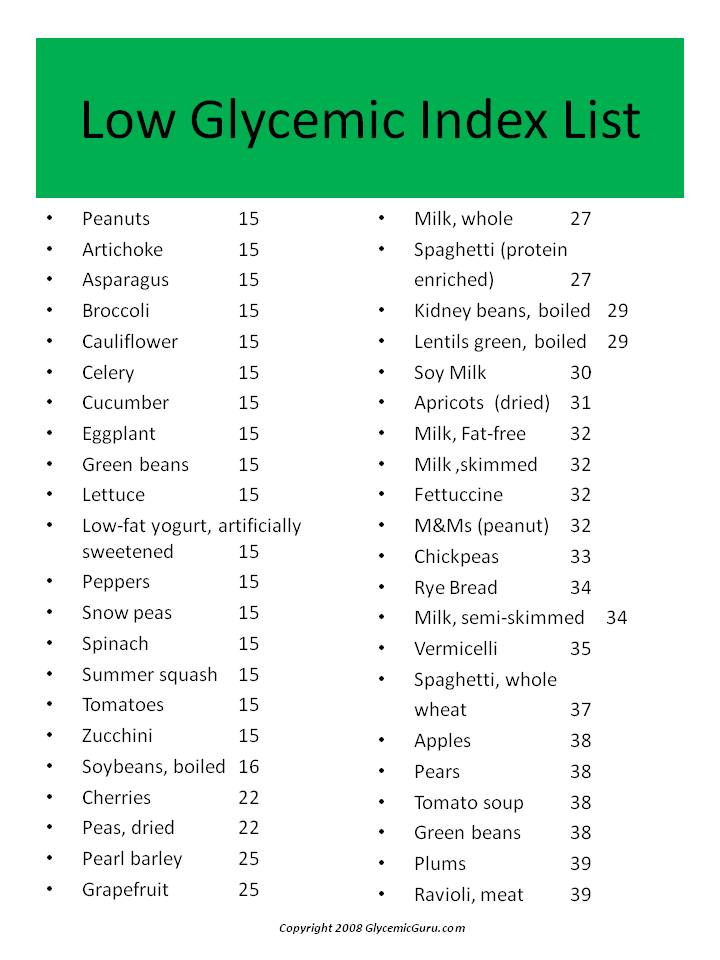Today, I want to share with you some valuable information about the Glycemic Index (GI) of foods. The GI is a ranking system that helps determine how quickly carbohydrates in different foods raise blood sugar levels. It is especially important for individuals who are managing conditions such as diabetes or looking to maintain stable blood sugar levels.
Low Glycemic Index Foods: A Helpful List
 Let’s start by exploring a comprehensive list of low GI foods. Consuming a diet rich in these foods can assist in controlling blood sugar levels effectively. Some examples include:
Let’s start by exploring a comprehensive list of low GI foods. Consuming a diet rich in these foods can assist in controlling blood sugar levels effectively. Some examples include:
- Fruits - such as apples, cherries, strawberries, and grapefruit - are great choices as they have a low GI and offer many essential nutrients.
- Vegetables like broccoli, spinach, cauliflower, and green beans are also low on the GI scale, making them a fantastic option for maintaining stable blood sugar levels.
- Whole grains - such as quinoa, barley, oats, and brown rice - are excellent alternatives to refined grains since they have a lower GI.
- Legumes, including lentils, chickpeas, and kidney beans, are not only high in protein and fiber but also have a low GI.
- Healthy fats like avocados, nuts, and olive oil are low GI options that can be incorporated into a balanced diet.
The Importance of a Low GI Diet
 Choosing low GI foods provides numerous benefits. Firstly, these foods are digested more slowly, leading to a gradual release of glucose into the bloodstream. This helps prevent sudden spikes in blood sugar, which can be harmful, especially for individuals with diabetes or insulin resistance.
Choosing low GI foods provides numerous benefits. Firstly, these foods are digested more slowly, leading to a gradual release of glucose into the bloodstream. This helps prevent sudden spikes in blood sugar, which can be harmful, especially for individuals with diabetes or insulin resistance.
Additionally, low GI foods have been linked to improved overall blood sugar control, weight management, and decreased risk of chronic diseases like heart disease and type 2 diabetes.
Making Wise Food Choices
 Making wise food choices is an essential aspect of maintaining a healthy lifestyle. By incorporating low GI foods into your diet, you can take control of your blood sugar levels and overall well-being.
Making wise food choices is an essential aspect of maintaining a healthy lifestyle. By incorporating low GI foods into your diet, you can take control of your blood sugar levels and overall well-being.
One helpful approach is to focus on consuming whole, unprocessed foods. Avoiding sugary drinks, refined grains, and processed snacks is key. Instead, opt for fresh fruits, vegetables, lean proteins, and whole grains. Be mindful of portion sizes and listen to your body’s hunger and fullness cues.
Conclusion
In conclusion, prioritizing low GI foods is an effective strategy for managing blood sugar levels and promoting overall health. Referencing a reliable Glycemic Index chart can help you make informed decisions about the foods you consume. Remember to consult with a healthcare professional or registered dietitian for personalized nutrition advice.
By choosing low GI foods, you are taking a positive step towards better health. So, let’s embrace these delicious and nutritious options and improve our overall well-being.